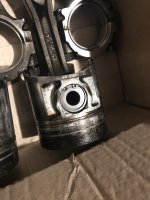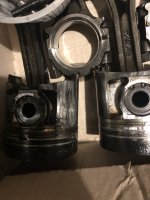Yes, this was my first gut reaction as well, but then I start thinking about it, and as has been pointed out... what is the additional cost in the grand scheme of things to have it done to the best degree possible? The answer is, its about 500-700 for the block work and I also have to do something about the cam bearings (which the machine shop will deal with, but nothing is free). That's not insignificant, but its also getting the block to the machine shop, 4 weeks lead time, repainting it when it comes back, etc etc.
I have a machinist straight edge and I have checked the deck on the block and I can't find any gaps with a .001" feeler gauge.
Thanks for the great feed back from everyone. My intention is to put a grapple on this machine and use it for a year or two cleaning up about 20 huge pine trees that have fallen and were felled at my rental property. Then I will probably sell it. I have a decent size Kubota tractor for general purpose stuff. If I end up keeping it, I think I would be hard pressed to put 20-30 hrs a year on it. I have owned my Kubota for more than 10 years and I think I put around 500-600 hrs on it.
But regardless of how I use the machine or what I end up doing with it. Since I am going through the trouble of rebuilding it, then I am going to do so with the expectation of getting 3-4k hours out of this engine again. And its not just the cost of the block work. I own a machine shop and I know how difficult it can be to hit high tolerances - all it takes is a little tool chatter and you are screwed. And I don't know anything about the auto machine shop I am using, except that he was recommended by a car engine place because they wont touch diesels.
I am leaning toward trying something to get the aluminum off and honing it... I feel like the devil you know....
clint

